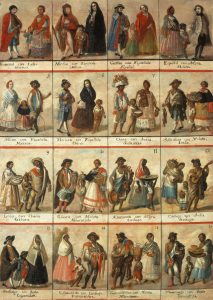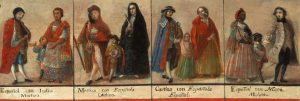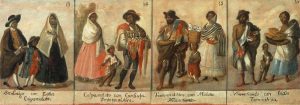This week’s lecture video discussed Bolívar and his role as a revolutionary leader, as he set an example for future revolutionaries and activists to follow, as seen by Hugo Chávez’s aspirations for a revolution in the late 20th century. His ideologies continue to inspire revolutionaries today. The video also briefly touched on Jóse Martí’s “Our America”, a text which can be seen as literary, due to its intricate use of metaphors and allegories to describe late 19th century Americas, and their need to unite, as described by “the trees must form ranks” in order to fight the “giant with seven-league boots”.
I found Martí’s text incredibly intriguing and powerful. As I read it, I imagined a speaker filled with fiery passion, eager to speak his beliefs. I felt like this was evident in the way that Martí allegorised America, and his people. Martí is regarded as Cuba’s National Hero. In his literature, he wrote of revolutionary ideas inspired by Bolívar and Juárez. He had a significant impact on the principles that served as a driving force in opposing the conquest of Latin America by the United States, as his ideas promoted unity and strength between neighbours.
Nowadays, we see Latin America as a whole, a group in the sense that the neighbours are united under the one name of “Latin America”. However, I am saddened seeing the state of corruption prevalent in Latin America nowadays. I wish a figure like Martí rose again, encouraging more unity within and between peoples of Latin America, and instead of fighting imperialists and conquistadors, they’d fight for Latin America, as a region, to thrive, economically, politically and socially. I wish that Martí’s allegory of nations as neighbours or men were reiterated: “Nations that do not know each other should quickly become acquainted, as men who are to fight a common enemy. I find that these words could be reapplied to modern day Latin America, where the unacquainted nations would be the people within and between countries differing in values and ideologies, ultimately separating them. Together, they should fight a common enemy – corruption – and instead of fighting for independence, they’ll fight for peace (well, theoretically fight, not literally fight. Basically, I wish that they’d put the entire region’s best interest at hand).
Nevertheless, it’d be wrong to say that there has been no improvement, especially with leaders such as Hugo Chávez as he knew that there was a need for a revolutionary change. My only hope is that there will be more leaders like him who will aid positive change, to improve the the quality of life of the people, and who will have the wellbeing of the entire public as a priority. I hope that these leaders will make a difference – just like how previous revolutionary leaders such as Bolívar and Juárez made such a huge impact in reforming Latin America in the 19th century, to make it independent as we know it today.



